In recent months, Donald Trump announced the intent to designate Antifa as a terrorist organization. Now, his supporters firmly believe that Antifa is a secretive, radical group with headquarters, leaders, and coordinated terrorist activity. But the truth is very different. This post unpacks what Antifa actually is, where the idea comes from, and what the facts tell us about violence in America today.
To understand today’s debate about Antifa, it helps to remember what antifascism actually is. “Antifa” is short for antifascist, a word that originated in Europe in the 1930s when ordinary people organized against the rise of Mussolini in Italy and Hitler in Germany. When the United States entered World War II, it was joining the greatest antifascist fight in history. American soldiers stormed beaches, liberated concentration camps, and gave their lives to defeat fascism.
In that sense, America has been antifascist for over 80 years. From the founding ideals of the Constitution to the fight against Nazis abroad, antifascism has always aligned with core American values: freedom of speech, freedom of religion, rule of law, equal protection, and resistance to dictatorship. These principles are the opposite of fascism, which thrives on censorship, loyalty oaths, scapegoating minorities, and elevating a single leader above all else including the law.
So Antifa is not an organized group. There are no headquarters, no leaders, no membership cards, no wealthy sponsors. Instead, “Antifa” is simply a label applied to the loose networks of activists globally who oppose fascism and white supremacy, sometimes through protests or direct action.
Despite this, many Americans still ask “what is Antifa”, and the answer is much simpler than the political rhetoric suggests. This is why labeling antifascism as “terrorism” rewrites history, as historians and national-security researchers have consistently pointed out. The reality is that opposing fascism has always been an American tradition. This post analyzes public data, expert research, and government findings to explain the facts about Antifa and political violence in the U.S.
According to DHS and ADL data, over 70–80% of domestic extremist killings in the U.S. are committed by far-right actors, not Antifa.

Antifa Explained: Myths & Lies About Antifa Debunked
When Trump first announced plans to designate Antifa as a terrorist organization, it wasn’t because new intelligence supported it, it was because the label served a political purpose. At the height of the 2020 protests against police brutality, his administration needed a villain. Antifa became that villain: a faceless, supposedly coordinated group responsible for “anarchist violence.” But the evidence never matched the rhetoric. These Antifa myths persist because of all the information and news coverage coming from the Trump administration.
Myth #1: Antifa Is A Structured Organization.
In reality, there is no national Antifa group — no headquarters, no leader, no membership database. “Antifa” simply describes a loose network of activists and community groups united by one principle: opposition to fascism and authoritarianism. The FBI, Department of Homeland Security, and multiple independent analyses have confirmed this repeatedly. Yet the myth persists because it’s politically useful.
Myth #2: Antifa Is Responsible For Widespread Violence.
Studies of political violence in the U.S. show that far-right extremists commit the overwhelming majority of ideologically motivated killings. Data from organizations such as the Anti-Defamation League (ADL) and the Center for Strategic and International Studies (CSIS) consistently find that over 75–80% of domestic terror incidents in recent decades were carried out by far-right groups, not antifascists. But the right’s focus on Antifa shifts attention away from their own extremist base and feeds into the larger Antifa and domestic terrorism narrative promoted by the Trump administration.
Further Reading:
- Analysis: What data shows about political extremist violence (PBS)
- Pushed to Extremes: Domestic Terrorism amid Polarization and Protest (CSIS)
- Right-Wing Extremist Terrorism in the United States (ADL)
Myth #3: Antifa And Black Lives Matter Are The Same.
This false equivalence became another way to delegitimize civil rights movements. While some antifascist activists joined racial justice protests, BLM is a separate, decentralized movement focused on ending systemic racism, not violent confrontation. The conflation of the two was a deliberate tactic — one that allowed Trump and his allies to frame the broader push for equality as a threat to public safety.
These myths didn’t spread by accident. They were crafted and amplified through a well-coordinated information ecosystem: Fox News headlines, right-wing influencers, and online propaganda networks that turned “Antifa” into a buzzword synonymous with fear. This Antifa misinformation helped transform a historical ideology into a modern political weapon.
The result? Millions of Americans now associate antifascism with chaos, despite the historical reality that antifascism, by definition, stands against tyranny, not for it.
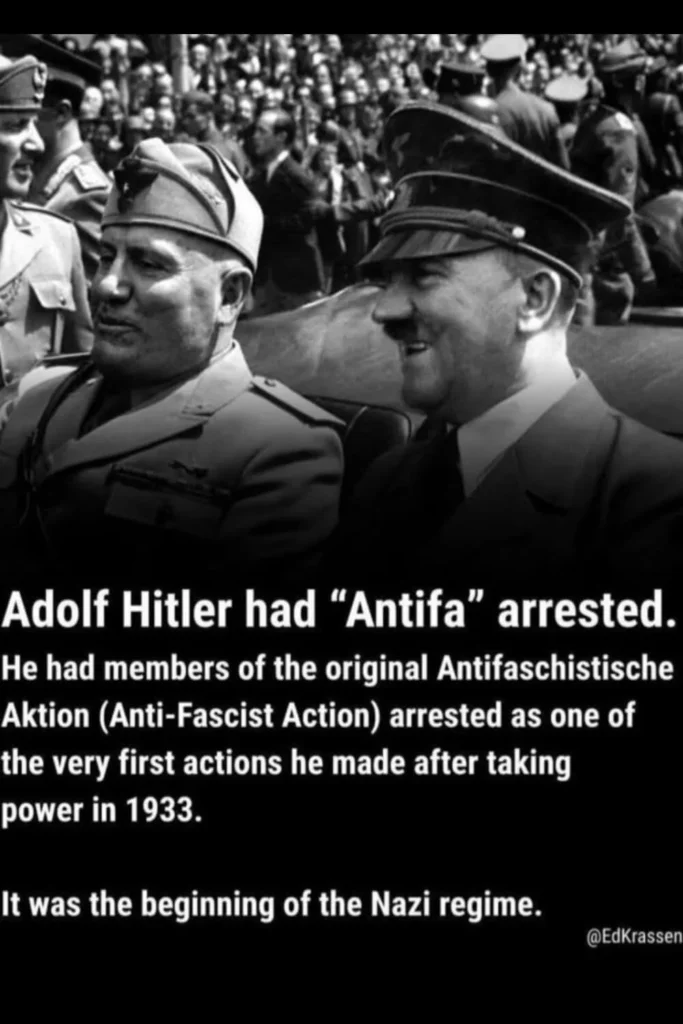
Antifa Explained: What Antifa Actually Is
To understand what Antifa really is, you first have to let go of the idea that it’s an organization. It’s not. There’s no central leadership, membership card, or national strategy. Antifa is short for “anti-fascist” and it’s an ideology rather than an institution. It represents a broad, decentralized movement of people who believe fascism should be confronted directly — not ignored, minimized, or excused.
Antifascism isn’t new, and it isn’t radical. The word “Antifa” might sound modern, but the principle behind it is as old as democracy itself: that authoritarianism and racism must be resisted before they take root. Most people who identify with or support Antifa do so not because they belong to a secretive group, but because they see antifascism as a moral stance, a refusal to stand by while hate and authoritarian power grow unchecked. Yet many Americans still ask what is Antifa, especially as political rhetoric overshadows the facts.
This distinction matters for those of you who are trying to understand what Antifa actually is. Antifa is an ideology, not an organization, and most experts emphasize this to correct the widespread public confusion.
Don’t believe me? Watch this short educational video by the U.S. Government called “Don’t Be A Sucker” to educate Americans about the dangers of fascism.
Antifa Activists Show Up Wherever Fascist Or White Supremacists Organize
Antifa activism in practice, is focused on publicly opposing fascism, white supremacy and Christian Nationalism. Sometimes that means holding counter-protests, documenting extremist movements, or spreading educational resources about hate networks. Their goal isn’t chaos; it’s defence – defence of marginalized communities, democratic norms, civil rights and against fascism in all its modern forms.
Of course, some individuals under the Antifa banner have used direct action or confrontation — most often property damage, not lethal violence — to disrupt far-right gatherings. Those moments receive nonstop coverage, while the daily organizing, research, and de-escalation work go unnoticed. This selective framing fuels the myth that Antifa’s entire existence revolves around violence. But as many historians and security experts have pointed out, Antifa’s actions are reactive, not initiatory. They respond to fascist movements, they don’t create them.
Antifa Always Emerges Out Of Necessity
In the 2010s, as far-right groups gained mainstream traction, antifascist activism re-emerged to meet that threat — especially after events like the 2017 Charlottesville rally, where white supremacists openly marched with torches and one counter-protester, Heather Heyer, was killed. When Trump declared there were “very fine people on both sides,” Antifa became a stand-in for anyone unwilling to normalize fascism or hate.
In short, Antifa is not an organization that seeks to destroy America. It’s a reminder that resisting fascism is — and always has been — an American tradition.

Why America Has Always Been Antifa
When the United States entered World War II, it was joining the greatest antifascist fight in history. American soldiers stormed beaches, liberated concentration camps, and gave their lives to defeat fascism.
In that sense, America has been antifascist for over 80 years. From the founding ideals of the Constitution to the fight against Nazis abroad, antifascism has always aligned with core American values: freedom of speech, freedom of religion, rule of law, equal protection, and resistance to dictatorship. These principles are the opposite of fascism, which thrives on censorship, loyalty oaths, scapegoating minorities, and elevating a single leader above the law.

A Long History Of Fighting Fascism
What many Americans don’t realize is that antifascism has always been woven into the country’s story, long before the word “Antifa” existed. Every generation has faced its own version of that struggle, and each time, ordinary people rose up to defend democracy. The abolitionists who fought to end slavery, the suffragists who demanded women’s rights, the labor organizers who stood against exploitation, and the civil rights activists who risked their lives to dismantle segregation — all were antifascists in practice, even if they never used the label.
The civil rights movement in particular represented one of the most powerful antifascist campaigns in American history. Leaders like Martin Luther King Jr. and Fannie Lou Hamer directly confronted systems of racial authoritarianism that mirrored the very ideologies the U.S. had fought abroad. Their fight for equality wasn’t just about social justice, it was about fulfilling America’s antifascist promise.
Fast Forward To Today: The Irony Couldn’t Be Starker
Politicians who claim to be “patriots” now vilify antifascism, the very belief system that underpins the democracy they swear to defend. Trump and his allies have reframed opposition to fascism as un-American, all while embracing authoritarian tactics that would have horrified the generation that fought in World War II.
If we strip away the propaganda, being antifascist is simply being faithful to America’s founding principles. It means rejecting tyranny, protecting human rights, and defending the institutions that keep power in check. The question isn’t whether Americans support Antifa, it’s whether they still believe in the freedoms that make antifascism necessary.
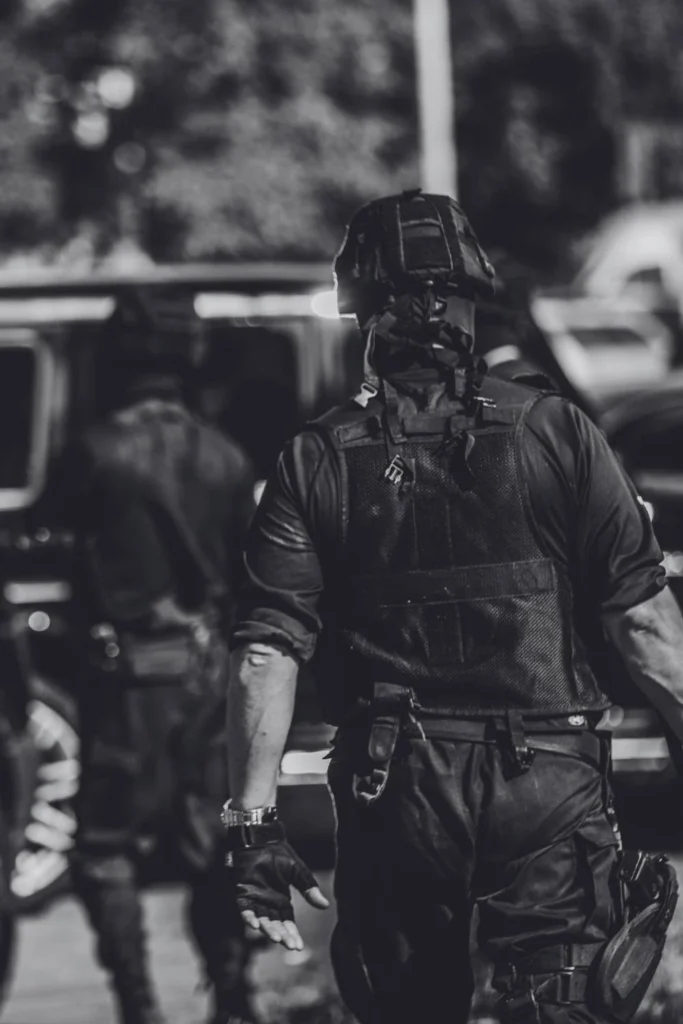
The History Of Extremism In America
While Trump’s movement has worked hard to convince Americans that Antifa is the country’s greatest threat, the real history of extremism in the United States tells a very different story. Political violence isn’t new — and it hasn’t come from the left. From the Ku Klux Klan’s post-Civil War terror campaigns to modern white nationalist militias, the most persistent and deadly forms of domestic extremism have come from the far right.
For centuries, violent extremism in America has been driven by one unifying idea: the preservation of white, Christian dominance. After the Confederacy’s defeat, white supremacist groups took up arms to enforce racial segregation and undermine Reconstruction. In the 20th century, those same ideologies fueled lynchings, church bombings, and the violent resistance to civil rights. Each era brought new names and uniforms, but the goals remained the same — to maintain power through fear and violence.
In the modern era, these movements have evolved rather than disappeared. The Klan gave way to neo-Nazi networks, militia movements, and online extremist communities that use disinformation and identity politics to recruit followers. Many of the perpetrators behind America’s worst hate crimes and domestic terror attacks — from Oklahoma City to Charleston, El Paso, and the January 6 insurrection — were radicalized by far-right ideology, not antifascist activism.
According to the Anti-Defamation League, the Center for Strategic and International Studies, and the FBI, the numbers show that: between 70% and 80% of domestic terror incidents in recent decades were carried out by far-right extremists, not left-wing activists. These groups include white supremacists, anti-government militias, and Christian nationalist movements that view political violence as a form of divine warfare.
Disclaimer: All claims about extremism in this post are grounded in publicly available research, federal data, and non-partisan analysis.
Despite this overwhelming evidence, Trump and his allies have repeatedly shifted public attention away from right-wing extremism. Labeling Antifa as the enemy isn’t just dishonest — it’s strategic. It diverts scrutiny from the authoritarian movements growing inside his own base. And by redefining “terrorism” to mean dissent, it lays the groundwork for criminalizing opposition altogether.
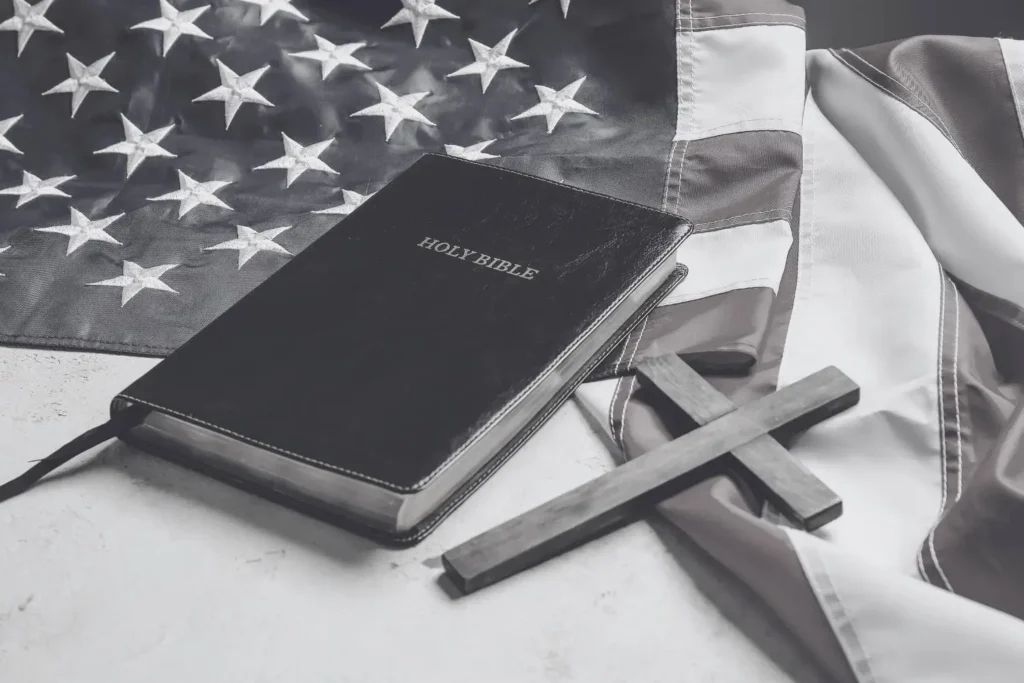
White Supremacists Became Christian Nationalists
Over time, America’s white supremacist movements have learned to adapt. The Klan hoods and Nazi flags that once made extremism easy to spot have been replaced with patriotic branding, Bible verses, and calls to “defend Christian values.” This rebranding has given rise to the ideology now known as Christian Nationalism, the belief that America was founded as a Christian nation and that only conservative Christians should hold power within it.
In the decades following the civil rights era, far-right leaders realized open racism no longer sold. By merging white nationalist goals with religious language, they found a way to mainstream their message. The Christian right’s rise in the late 20th century, through televangelism, political action committees, and culture-war rhetoric, created a powerful infrastructure that brought extremist ideas into American politics under the banner of faith and patriotism.
To learn more about Christian Nationalism in America, check out my post on Why Christians Think They Should Rule America.
Domestic extremist organizations are growing in membership, activity levels, and sophistication — and they aren’t being met with meaningful and effective opposition.

White Power Extremism Simply Rebranded And Normalized
Today, that merger is complete. Politicians invoke “God’s will” to justify policies that target women, LGBTQ+ communities, and minorities. Armed militias use religious symbols to claim divine protection. Pastors preach obedience to a single leader as a moral duty. What began as a fringe ideology has become a dominant force shaping America’s right-wing politics — from local school boards to the national stage.
This transformation didn’t make extremism disappear. It simply made it more respectable and accepted. When hate is disguised as holiness, it becomes harder to challenge, and easier to normalize. That’s why recognizing the roots of Christian Nationalism matters. it’s not simply a religious movement, but a rebranded form of white supremacy built to thrive in modern America.
For those who want to dig deeper into the data, organizations such as the Southern Poverty Law Center (SPLC), the Anti-Defamation League (ADL), and the Institute for Research and Education on Human Rights (IREHR) maintain detailed annual reports on hate groups, political violence, and extremist recruitment trends. Meanwhile, Task Force Butler actively works to find, expose, and dismantle networks. Their findings consistently confirm what this post makes clear: the most organized, well-funded, and violent extremist networks in America do not call themselves Antifa — they call themselves patriots.
For far too long neo-Nazi, white supremacist, and fascist organizations have been able to terrorize vulnerable Americans and erode our democracy without paying a price.
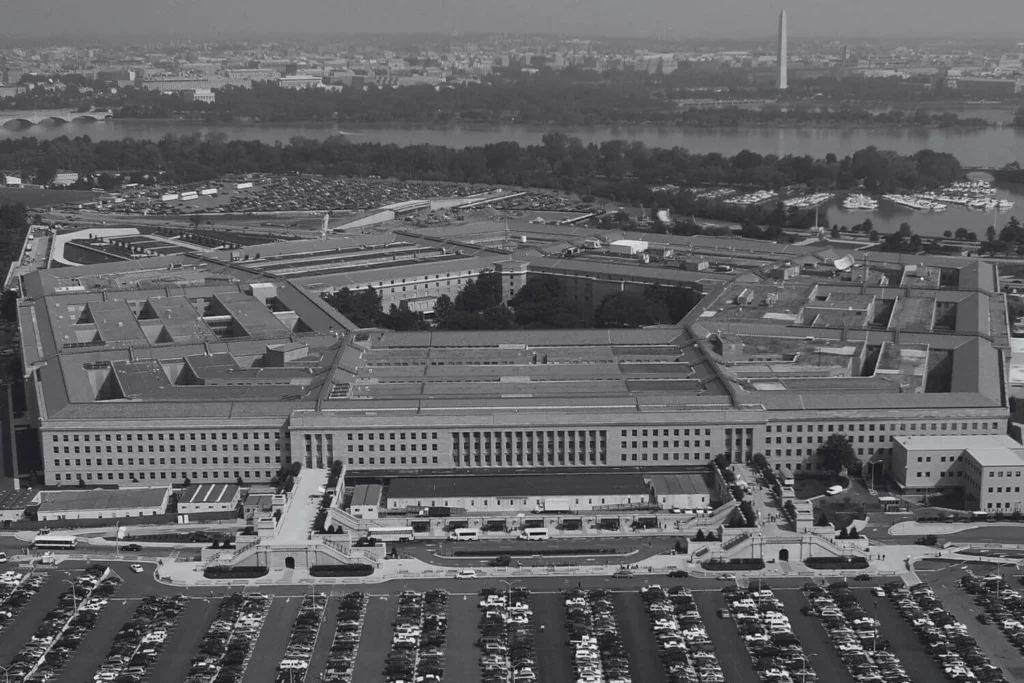
NSPM-7: What You Need To Know
If you’ve never heard of NSPM-7, that’s not an accident. The National Security Presidential Memorandum-7, signed by Donald Trump during his second term in 2025, has received very little public attention but it quietly reshaped how the federal government views domestic security. Under the guise of strengthening counterterrorism coordination, it now gives the White House increased control over how “domestic threats” are defined and prioritized.
In practice, it means blurring the line between legitimate dissent and extremism. While the United States has always distinguished between protest and terrorism, NSPM-7 has shifted that framework. The memo’s language about “domestic extremist organizations” has also allowed for broad interpretation, according to legal analysts and national security scholars who reviewed the text. This means that the Trump administration can effectively frame literally anyone as a left-wing activist and a national security threat without any evidence.
To learn more about NSPM-7 and how dangerous it is, here are some resources:
- NSPM-7: The Quiet Memo That Could Muzzle a Nation
- White House gives platform to conservative influencers to air grievances during ‘antifa roundtable’ – as it happened (The Guardian)

Trump Regime Rhetoric Against Everyone Who Opposes Him
By 2020, that shift became visible. Trump and his allies cited “domestic extremism” to justify surveillance and prosecutions of protesters, while refusing to apply the same standards to armed right-wing groups or white supremacist militias. The groundwork was laid for a chilling precedent: when opposition is labeled as terrorism, democracy itself becomes the enemy.
NSPM-7 matters because its architecture still exists. If revived or expanded under a second Trump term, it could be used to target journalists, activists, and ordinary citizens who challenge government authority. It’s a bureaucratic tool with authoritarian potential, one that turns political power into a weapon of fear.
Understanding this policy isn’t about technicalities; it’s about recognizing how language can redefine reality. “National security” sounds neutral, but in the wrong hands, it becomes a shield for repression. The lesson is clear: vigilance over vague laws and memoranda is as vital to democracy as voting itself.

When Authoritarian Language Becomes Normal
In October 2025, Trump allies including Pam Bondi and other administration officials held a roundtable on “Antifa and domestic terrorism.” Their rhetoric was alarming — not just for its hostility toward dissent, but for its violent undertones. Bondi referred to antifascists as “domestic enemies,” others called for “crushing them like terrorists,” and Trump himself described protesters as “thugs” who “hate our country.”
Language like this doesn’t just distort reality — it normalizes state aggression against citizens. When leaders use words like enemy, war, or eradicate to describe fellow Americans, it signals a shift away from democracy and toward authoritarian rule.
This is not activism, it’s anarchy. We can’t and we will not let masked terrorists burn our buildings, attack our law enforcement and intimidate our communities.
Kristi Noem, October 2025
They have been very threatening to people, but we’re going to be very threatening to them, far more threatening to them than they ever were with us, and that includes the people that fund them.
Donald Trump, October 2025
This network of Antifa is just as sophisticated as MS-13, as TDA [Tren de Aragua], as ISIS, as Hezbollah, as Hamas, as all of them. They are just as dangerous. They have an agenda to destroy us, just like the other terrorists we’ve dealt with.
Kristi Noem, October 2025
Notice the language: threats, comparison to foreign terrorist groups, framing dissent as war. Even though there is no formal structure behind Antifa, senior officials claimed otherwise. This is the propaganda mechanism we’re debunking above.
Learn more about Authoritarianism in my post What Is Authoritarianism? Why It’s Happening In America Now.
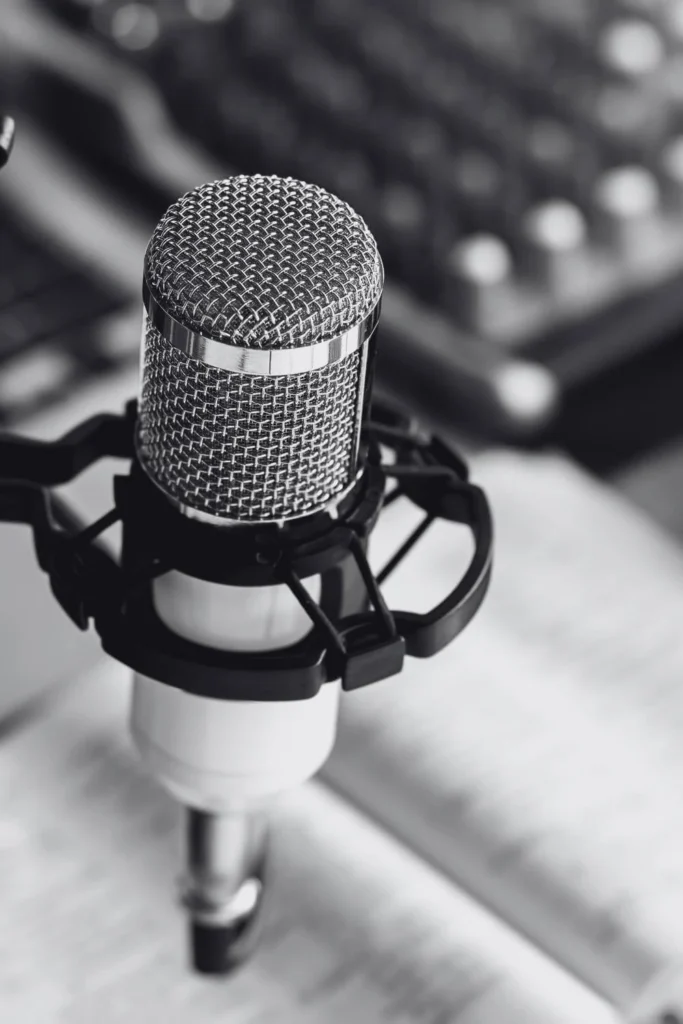
Ways That You Can Actively Resist
Antifascism doesn’t require a flag, a slogan, or a mask. It requires awareness and action — and both begin with rejecting the fear narrative that equates opposition with violence. Here are practical ways to live out antifascist values in everyday life.
1. Educate Yourself On Authoritarianism, American History & White Supremacy
Knowledge is power especially in the fight against authoritarianism so make education on topics like authoritarianism, American history, white supremacy, Christian Nationalism, the Republican Party and the Trump Regime.
For comprehensive reading lists for both adults and youth, check out my post Countering Banned Books In America: Essential Reads On Racism, Religion & Democracy.
For a comprehensive list of movies and documentaries on these topics and more, look at my post We’ve Seen This Movie Before: Films That Predicted America’s Authoritarian Turn which includes mini film guides if you have limited time.
2. Stay informed And Question Sources
Consume news from independent outlets that prioritize facts over spin. Cross-check information before sharing it, and be wary of emotionally charged headlines designed to divide. Knowledge is your first line of defence against propaganda.
The Information War: Lies, Algorithms, and How Disinformation Undermines Democracy
For help identifying propaganda and misinformation, refer to my guide on How To Build A Smarter News Feed And Fight Propaganda.
For independent media, influencers, and subject matter experts to follow and amplify, I’ve put together a comprehensive list organized by topic in this post on Independent Media To Follow: Join The Voices Defending Democracy.

3. Support Credible Organizations Fighting Extremism
There are so many organizations and watchdogs fighting back against the Trump Regime. Groups like the ADL, SPLC, IREHR, and Protect Democracy track hate groups, educate the public, and defend civil liberties in court. Donations and signal-boosting their work helps counteract well-funded disinformation networks.
Also, support grassroots groups like Indivisible, and counter-extremism organisations like Task Force Butler who are actively working to find and dismantle right-wing extremist networks, of far-right extremists and violent white supremacist cells.
For a full list of organizations to support, check out my post on Organizations Fighting Trump and The GOP: Advocacy Groups and Watchdogs.
4. Engage Locally
Authoritarian movements gain power when communities disengage. Attend town halls, vote in every single election, support and amplify progressive candidates who uphold democratic norms, and are willing to fight and hold accountable the individuals in the Trump regime.
If you are able to volunteer in the local community, and support things like voter-protection initiatives or local media literacy programs that help build civic resilience.
5. Confront Hate Safely
If you witness harassment or extremist activity, document it and report it to the appropriate authorities or credible watchdog groups. Also record ICE or extremist organizations during public actions and share the footage with trusted outlets. Visibility matters; documenting wrongdoing and passing it to reputable organizations will help to protect vulnerable communities and hold abusers accountable.
Collective visibility, not silence, deters violence.
6. Protect Your Digital Footprint
Disinformation campaigns rely on data mining and manipulation. Learn basic digital-security practices: use strong passwords, limit personal information on public platforms, and understand how algorithms shape what you see online.
7. Build Solidarity Networks
Join or create community groups that promote inclusion — book clubs, advocacy meetups, interfaith initiatives. Authoritarianism isolates people; antifascism brings them together.

8. Boycott Companies Supporting Fascism
Financial boycotts have always been one of the most effective non-violent tools against authoritarian movements because they cut off the money that keeps those systems alive. Fascist and extremist networks heavily rely on a mix of corporate funding, donor pipelines, and consumer spending to fund their regimes. So, when people redirect their purchases away from companies funding a regime in favour of ethical and local businesses instead, it weakens those power structures in a way political rhetoric alone never can.
9. Shop Local As Much As You Can
Along with boycotting all the big companies funding fascism, one of the other best ways to fight back against fascism while helping people directly affected by the Trump administration is to shop locally as much as possible. For example for Thanksgiving, Christmas and birthdays, get your gifts from artisan markets, and small boutiques rather than retailers like Amazon.
Resistance against Fascism must be professionalized, persistent, and overwhelming, not haphazard and without competent and inspiring leadership.
Antifascism Is Patriotism & Human Rights
Antifascism is not about violence or partisanship — it’s about preserving freedom, equality, and accountability. Every time someone refuses to normalize hate, stands up for truth, or defends their neighbor’s rights, they’re practicing antifascism in its truest form.
The far right’s attacks on Antifa were never just about semantics. They were about rewriting history and redefining patriotism. Understanding that is the first step toward resistance — and toward reclaiming the American tradition of standing up to tyranny rather than surrendering to it.

FAQs About Antifa
Is Antifa an organization?
No. Antifa is not an organized group with leaders, membership, or funding. It’s a broad ideological movement — shorthand for anti-fascist — made up of loosely connected individuals and community networks who oppose fascism, racism, and authoritarianism.
Does Antifa promote violence?
Antifa does not advocate violence as a goal. While some individuals identifying with antifascist activism have engaged in confrontational tactics, the majority of actions focus on counter-protesting, monitoring hate groups, and spreading awareness. By contrast, federal data show that far-right extremists are responsible for the vast majority of political violence and domestic terrorism in the U.S.
Why do Trump and Republicans focus on Antifa?
Because “Antifa” became a political tool. By framing antifascists as enemies, the Trump regime was able to justify harsh crackdowns on dissent and shift attention away from the violence committed by its own far-right supporters. The myth of Antifa as a terrorist network helped build public fear — and fear is essential to authoritarian control.
How is Antifa different from Black Lives Matter?
They are entirely separate movements. Black Lives Matter campaigns against systemic racism and police brutality; Antifa activism focuses on opposing fascism and white supremacy. Some individuals may support both causes, but they have distinct origins, goals, and methods.
Is opposing fascism political?
No — it’s moral. Antifascism transcends party lines. It means defending democracy, equality, and human rights. If standing against tyranny and hate makes someone “political,” then so be it — democracy itself is political.
Learn More About American Politics
- Antifa Explained: Extremism, Myths, And Violence In America
- Independent Media To Follow: Join The Voices Defending Democracy
- The Information War: Lies, Algorithms, and How Disinformation Undermines Democracy
- How To Build A Smarter News Feed And Fight Propaganda
- We’ve Seen This Movie Before: Films That Predicted America’s Authoritarian Turn
- Countering Banned Books In America: Essential Reads On Racism, Religion And Democracy
- Organizations Fighting Trump and The GOP: Advocacy Groups and Watchdogs You Should Support
- Pete Hegseth And The Christian Takeover Of The Pentagon
- Why Christians Think They Should Rule America
- 2024 US Election: How Elon Musk & Republicans Stole It In Plain Sight
- Boycott America: Should I Visit The US During Trump presidency?
Share Me
If you found this post helpful, share it or pin it! It’s one of the best ways to show your support. Thank you!
Gemma Lawrence is a British expat, solo female travel blogger, and the creator of This Brit’s Life — a travel and lifestyle blog that helps women explore the world confidently, live abroad independently, and stay informed about global issues.
Born and raised in England, Gemma has been living in British Columbia, Canada since 2016 and has been traveling solo for over a decade. With a background in journalism and over ten years of experience in digital marketing and communications — including leadership roles with the International Association of Business Communicators (IABC/BC) — she brings both storytelling and strategy to her writing.
Through her posts, Gemma shares practical solo travel advice, expat insights, and confidence-building resources, while also covering broader topics like women’s rights, democracy, and self-care. Her goal is to inspire independence, awareness, and personal growth — one adventure at a time


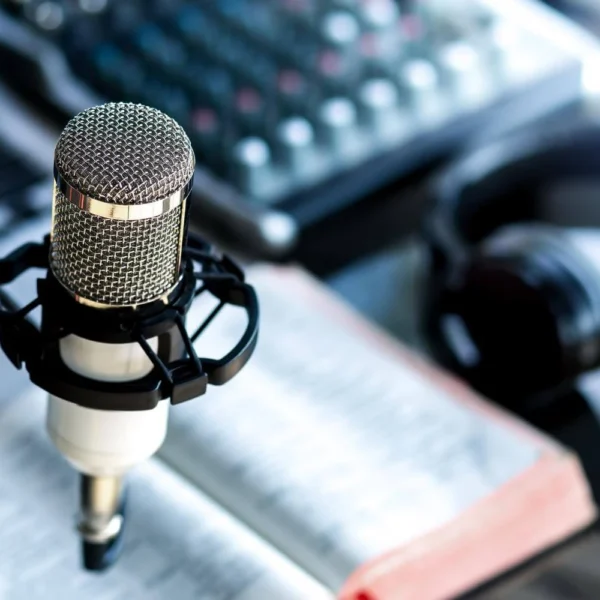


Leave a Reply